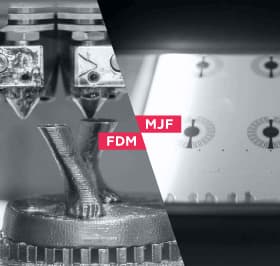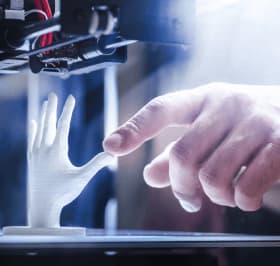Additive technologies in computer-aided manufacturing
Present-day industrial manufacturing becomes increasingly computer-aided day by day. Reduced manual labor eliminates errors and human factors, making the conveyor line more efficient.
TeleTec keeps up with global trends: the company’s engineers have designed a computer-aided soldering station. Their robot can do the job of two installers. Denys Polishchuk, Director of Manufacturing and Technology Policy at TeleTec, told us all about it in an interview.
What kind of job does a computer-aided soldering station do?
The computer-aided robot is designed for soldering lead components. We use it to solder boards for electric meters and street lighting. The station does the job of an installer.
What does a robot consist of?
Except for the operator’s workstation, the robot consists of two soldering machines. Each includes the following components:
- A frame
- A personal computer powered by software for controlling the automatic device
- A movable beam that moves the soldering iron tip on three axes
- A control unit for the beam and mechanisms of the automatic device
- A soldering iron
- A mechanism for feeding solder into the soldering area
- An automatic cleaning mechanism for the soldering iron tip
- A local exhaust

How does the mechanism work?
Before starting a work process, the operator turns on the soldering machines and soldering irons and then selects a soldering program. For each board type, engineers design a different soldering program. It’s written in G-codes using the coordinates of soldering points on a board.
The board is placed in the corresponding sliding gear, while the necessary electronic components are mounted on it. Then the sliding gear with the board is mounted in the tray of the computer-aided soldering machine, and the soldering program starts.
Then it’s a mere formality: the moving beam with the soldering irons solders the components to the board tracks. When the soldering program is complete, the operator inspects the board and fixes issues if the soldering is faulty. Then the work cycle repeats.
Do you need a high-energy source for a station like that?
No, you don’t. The robot is powered by 220 V electric line voltage.
What are the advantages of this robot?
The main advantages are the automation and continuity of the soldering process throughout the shift. Since the station handles two boards simultaneously, the operator achieves double productivity compared to conventional manual soldering. Thus, the station operator doesn’t need as high qualification as an installer who solders boards manually.

When designing and building a robot like that will it pay for itself?
The payback period is just a year and a half. We achieve results like that thanks to our company’s additive manufacturing.
What role did this technology have in the station design?
We make most of the plastic parts using 3D printing with polyamide. It wasn’t feasible to make commercially available plastic molds for our prototype.

It’s not the first time our manufacturing facility has used additive MJF technology. We use 3D printing regularly to make parts for tooling stands, instruments, and other equipment for TeleTec.
The company now intends to commercialize its computer-aided soldering stations. As explained by the company’s representatives, these robots will help electronics manufacturers increase work efficiency, optimize costs, and improve quality.


